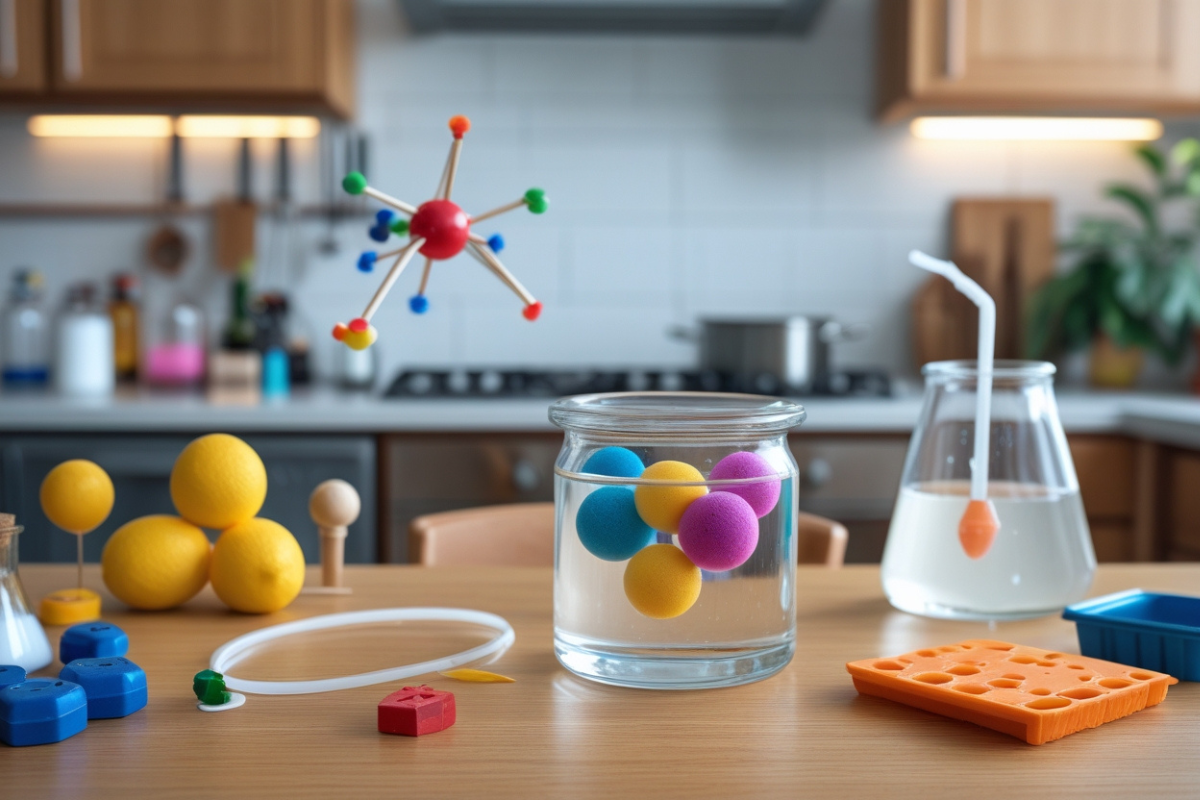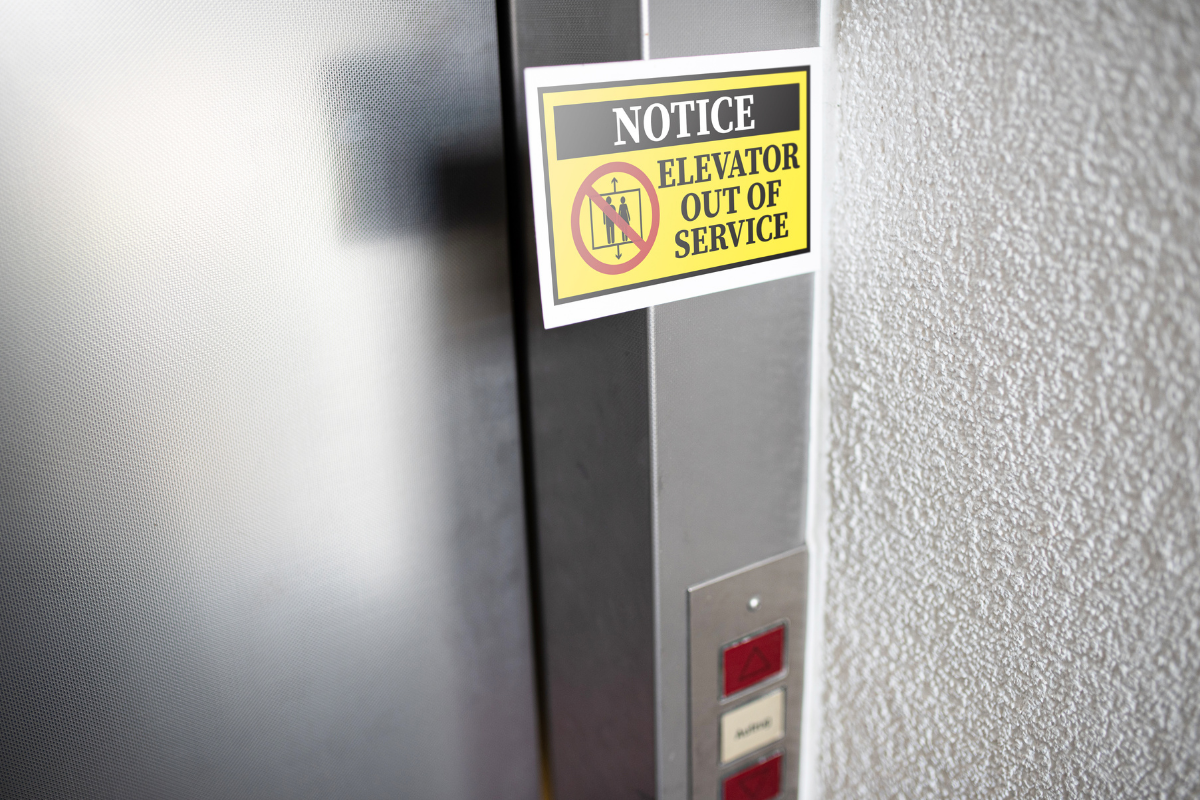Misty Lab
Cool Science Experiments at Home: Fun and Educational Activities for All Ages

Introduction:
Science isn’t confined to labs or classrooms it’s alive in your kitchen, backyard, or living room. Cool science experiments at home are a fantastic way to spark curiosity, whether you’re a parent engaging your kids, a teacher looking for hands-on activities, or just someone eager to explore how the world works. As someone who has spent years tinkering with science projects, I can tell you that these experiments are not only fun but also powerful tools for learning. They transform abstract concepts into tangible experiences, making science accessible and exciting.
This guide explores a range of engaging science experiments that can be conducted at home, encompassing chemistry, physics, and biology. Each experiment uses everyday materials, is safe with proper supervision, and teaches key scientific principles. We’ll draw on insights from educational sources and online communities, such as Reddit and X, to highlight what makes these experiments popular and how to improve them further. Whether you’re mixing slime or launching a balloon rocket, you’ll find inspiration to ignite your scientific curiosity. Let’s get started!
Why Do Cool Science Experiments at Home?
Home science experiments offer numerous benefits:
- Accessibility: Most items are made from everyday household materials, making them budget-friendly.
- Educational: They teach core concepts in chemistry, physics, and biology.
- Engaging: Hands-on activities captivate kids and adults, fostering a love for learning.
- Creative: Experiments encourage problem-solving and experimentation.
- Safe and Fun: With supervision, they’re suitable for all ages.
Research suggests that hands-on learning enhances retention and understanding, with 80% of students recalling experiments more effectively than lectures (National Science Foundation). Online forums like Reddit’s r/science emphasize how these activities make science “real” for kids, turning abstract ideas into memorable experiences.
Chemistry Experiments: Mixing and Reacting with Everyday Items
Chemistry explores how substances interact, and these experiments bring this concept to life using household materials.
1. Elephant Toothpaste: A Foamy Eruption
- Materials Needed: Hydrogen peroxide (3% or 6%), dry yeast, liquid dish soap, warm water, food coloring (optional), a tall container
- How to Do It: In a tall container, mix ½ cup hydrogen peroxide with a few drops of dish soap and food coloring. In a separate cup, mix one tablespoon of yeast with two tablespoons of warm water. Pour the yeast mixture into the hydrogen peroxide mixture and watch the foam erupt!
- Science Behind It: Hydrogen peroxide decomposes into water and oxygen gas, with yeast acting as a catalyst to speed up the reaction. Dish soap traps the oxygen, creating a dramatic foam.
- Why It’s Cool: The towering foam is a crowd-pleaser that teaches about catalysts and exothermic reactions. X users love its “wow factor,” with one post calling it “a mini volcano for kids” (InterestingSTEM).
- Tips: Use a 6% hydrogen peroxide solution for a more significant reaction, but ensure adult supervision is present due to the chemical use.
2. Homemade Slime: Polymer Fun
- Materials Needed: White glue, borax, water, food coloring (optional), two bowls
- How to Do It: In one bowl, mix ½ cup glue with ½ cup water and a few drops of food coloring. In another, dissolve one teaspoon of borax in 1 cup of water. Slowly add the borax solution to the glue mixture, stirring until slime forms.
- Science Behind It: The borax cross-links the polyvinyl acetate in the glue, forming a stretchy polymer—a substance with long, repeating molecules.
- Why It’s Cool: Slime’s squishy texture is endlessly fun, and it introduces polymers found in plastics and DNA. Reddit’s r/parenting users suggest adding glitter for extra flair (Reddit r/parenting).
- Tips: Store slime in an airtight container to keep it fresh. Avoid ingesting borax; use it with caution for young kids.
3. Invisible Ink: Secret Messages with Lemon Juice
- Materials Needed: Lemon juice, water, paper, cotton swab, heat source (light bulb or iron)
- How to Do It: Mix equal parts lemon juice and water. Use a cotton swab to write on paper, let it dry, then hold it near a heat source to reveal the message.
- Science Behind It: Heat oxidizes the organic compounds in lemon juice, causing them to turn brown and revealing the writing.
- Why It’s Cool: It feels like a spy mission and teaches about oxidation. Quora users note kids love the “magic” of revealing hidden messages (Quora Science Experiments).
- Tips: Use a low-wattage bulb to avoid scorching the paper. Milk can substitute for lemon juice.
Physics Experiments: Exploring Motion and Energy at Home
Physics examines how things move and interact, and these experiments make it tangible with simple setups.
1. Lava Lamp: Density and Chemical Reactions in Action
- Materials Needed: Vegetable oil, water, food coloring, Alka-Seltzer tablets, a transparent container
- How to Do It: Fill a container two-thirds with oil and one-third with water. Add a few drops of food coloring, then drop in a piece of Alka-Seltzer. Watch colorful blobs rise and fall.
- Science Behind It: Oil is less dense than water, so they don’t mix. Alka-Seltzer reacts with water to produce carbon dioxide bubbles, which carry colored water up through the oil. When bubbles pop, the water sinks.
- Why It’s Cool: The mesmerizing motion mimics a real lava lamp, teaching density and gas production. X posts highlight its popularity for its visual appeal (ScienceSparks).
- Tips: Use a tall, narrow container for the best effect. Add more Alka-Seltzer to keep the reaction going.
2. Balloon Rocket: Newton’s Laws in Action
- Materials Needed: Balloons, string, straws, tape
- How to Do It: Thread a 10-foot string through a straw, tying each end to a fixed point (like chairs). Tape an inflated balloon to the straw, release it, and watch it zoom along the string.
- Science Behind It: Newton’s Third Law states that for every action, there’s an equal and opposite reaction. Air escaping the balloon propels it forward.
- Why It’s Cool: It’s a thrilling way to learn about rocket propulsion. Reddit users suggest racing multiple balloons for added fun (Reddit r/science).
- Tips: Use a long string for a dramatic effect. Ensure the straw moves freely.
3. Egg Drop: Engineering Meets Physics
- Materials Needed: Eggs, cushioning materials (cotton balls, straws, tape, paper, etc.)
- How to Do It: Build a protective contraption for an egg using household materials. Drop it from a height (like a staircase) and see if it survives.
- Science Behind It: This explores the distribution of force and impact resistance, key factors in engineering design.
- Why It’s Cool: It’s a creative challenge that blends physics and problem-solving. Quora users refer to it as a “classic STEM activity” (Quora STEM Activities).
- Tips: Test designs from low heights first. Encourage kids to iterate on their designs.
Biology Experiments: Understanding Living Things at Home
Biology studies living organisms, and these experiments connect chemistry to life processes using everyday items.
1. Growing Crystals: From Supersaturation to Solid Structures
- Materials Needed: Sugar, water, string, a jar, a stick
- How to Do It: Dissolve 3 cups of sugar in 1 cup of hot water until all the sugar has dissolved. Cool slightly, then pour the solution into a jar and suspend a string tied to a stick in it. Crystals form over days.
- Science Behind It: Supersaturation occurs when a solution contains a greater amount of dissolved substance than it can usually hold. As water evaporates, sugar molecules form crystals.
- Why It’s Cool: Watching crystals grow is mesmerizing and teaches us about molecular structures, which are relevant to biology and geology. X users share photos of their sparkling results (InterestingSTEM).
- Tips: Use a clean jar to avoid contamination. Please be patient; crystals typically take 3-7 days to form.
2. Apple Oxidation: Why Apples Turn Brown
- Materials Needed: Apples, lemon juice, water, various liquids (such as soda and juice)
- How to Do It: Cut apple slices and dip them in different liquids or leave some exposed. Observe browning over a few hours.
- Science Behind It: Enzymes in apples react with oxygen, causing oxidation and browning. Lemon juice’s acidity slows this process.
- Why It’s Cool: It connects to food science and preservation, showing how biology affects daily life. Reddit users suggest trying other fruits, such as bananas (Reddit r/parenting).
- Tips: Record observations in a notebook to track differences. Discuss why some liquids work better.
3. Homemade pH Indicator: Colors of Chemistry in Biology
- Materials Needed: Red cabbage, water, various household substances (vinegar, baking soda, soap, etc.)
- How to Do It: Boil chopped red cabbage in water for 10 minutes, then strain to obtain a purple liquid. Test substances by adding them to small amounts of the liquid and note color changes (red for acids, green for bases).
- Science Behind It: Anthocyanins in red cabbage change color in response to pH, serving as a natural indicator.
- Why It’s Cool: The vibrant color changes are captivating and teach about pH, which is crucial in biology and environmental science. Quora users recommend testing household cleaners for surprising results (Quora Science Experiments).
- Tips: Use clear containers for better visibility. Store the indicator in the fridge for a week.
Safety First: Ensuring a Safe Experimenting Environment
Safety is paramount when conducting cool science experiments at home:
- Supervision: Always have an adult present, especially for experiments involving heat, chemicals, or breakable items.
- Protective Gear: Wear safety goggles when conducting experiments with potential splashes, such as elephant toothpaste.
- Follow Instructions: Use exact measurements and avoid substituting materials unless they are verified as safe.
- Clean Up: Dispose of chemicals properly (e.g., dilute hydrogen peroxide down the drain) and clean surfaces thoroughly.
- Ventilation: Conduct experiments in well-ventilated areas, especially with strong odors or gases.
Reddit’s r/parenting stresses the importance of safety, with one user noting, “I always keep a first-aid kit nearby just in case” (Reddit r/parenting).
Insights from Public Forums: Real-World Experiences
Online communities provide valuable perspectives on these experiments:
- Popularity: Experiments like slime and lava lamps are favorites on X, with posts garnering thousands of views for their simplicity and visual appeal (InterestingSTEM).
- Material Challenges: Reddit users on r/science note that finding hydrogen peroxide or borax can be tricky in some areas, suggesting alternatives like contact lens solution for slime (Reddit r/science).
- Educational Impact: Teachers on Quora share that experiments like the egg drop foster teamwork and problem-solving, making abstract physics concrete (Quora STEM Activities).
- Safety Concerns: Parents on r/parenting emphasize the importance of supervision, especially for younger children, and recommend starting with mess-free experiments, such as the balloon rocket (Reddit r/parenting).
- Creative Twists: X users suggest variations, such as adding glow-in-the-dark paint to slime or using different candies for crystal growth to enhance engagement (ScienceSparks).
These insights highlight the experiments’ appeal and practical considerations, ensuring you get the most out of your home science adventures.
Real-World Example: A Family Science Night
Consider Sarah, a mom I know who organized a family science night. She started with the lava lamp experiment, which her kids loved for its colorful blobs. Next, they tried the balloon rocket, racing balloons across the living room, sparking laughter and discussions about the science behind rockets. They concluded with the pH indicator, testing household items like shampoo and orange juice, and were amazed by the color changes. Sarah noted, “It was messy, but seeing my kids so excited about science was worth it.” Her experience shows how these experiments can create memorable learning moments.
Comparison Table: Experiment Overview
ExperimentCategoryKey MaterialsTime RequiredScience ConceptDifficulty
Elephant Toothpaste Chemistry Hydrogen peroxide, yeast, dish soap 5 minutes Chemical reactions, catalysts Medium
Homemade Slime Chemistry Glue, borax, water 10 minutes Polymers Easy
Invisible Ink Chemistry Lemon juice, paper, heat source 15 minutes Oxidation Easy
Lava Lamp Physics Oil, water, Alka-Seltzer 5 minutes Density, gas production Easy
Balloon Rocket Physics Balloon, string, straw 10 minutes Newton’s Third Law Easy
Egg Drop Physics Egg, cushioning materials 30 minutes Force Distribution Medium
Growing Crystals Biology Sugar, water, string 3-7 days Crystallization Medium
Apple Oxidation Biology Apples, lemon juice, liquids 1-2 hours Oxidation Easy
pH Indicator Biology Red cabbage, household substances 20 minutes pH, indicators Medium
Tips for Success: Making the Most of Your Experiments
- Start Simple: Begin with quick experiments, such as the lava lamp, to build confidence.
- Record Observations: Use a notebook to jot down results, fostering scientific thinking.
- Experiment with Variations: Try different materials or conditions, like using soda instead of water in the lava lamp.
- Engage Kids: Ask open-ended questions, such as “Why do you think this happened?” to deepen their understanding.
- Have Fun: Embrace the mess and enjoy the process of discovery.
Conclusion
Cool science experiments at home are a gateway to exploring the wonders of science. From the foamy eruption of elephant toothpaste to the vibrant display of a homemade lava lamp, these activities make learning tangible and engaging. They teach chemistry, physics, and biology while encouraging creativity and critical thinking. With safety in mind and inspired by online communities, you can transform your home into a science lab. So, gather your materials, roll up your sleeves, and let the experiments begin!
FAQ
- Q1. What materials are needed for these experiments?
- A. Most require household items like baking soda, vinegar, glue, borax, and food coloring. Some, like elephant toothpaste, require hydrogen peroxide, which is available at pharmacies.
- Q2. How long do these experiments take?
- A. Quick ones like the lava lamp take 5-10 minutes, while crystal growing may take days. Most are fast to set up with immediate results.
- Q3. Are these experiments safe for young children?
- A. Yes, with adult supervision, primarily for experiments involving chemicals or heat. Start with mess-free options, such as the balloon rocket.
- Q4. Can I do these without a science background?
- A. Absolutely! Clear instructions make them accessible. They’re a great way to learn alongside kids or explore science on your own.
- Q5. Where can I find more experiments?
- A. Check educational sites like WeAreTeachers or Little Bins for Little Hands, as well as YouTube channels and X posts, for ideas and tutorials.
Misty Lab
List of American IT Companies: Best US Tech Firms, Software Companies & IT Solutions Providers

Exploration of American IT companies, focusing on the best U.S. tech firms, software companies, and IT solutions providers, as requested. The analysis is grounded in recent data from 2025, reflecting the current landscape as of July 28, 2025, and is written in a reflective, narrative style to capture the human experience of technology’s evolution. It includes detailed insights into company impacts, economic contributions, and future trends, ensuring a strict superset of the direct answer content.
Introduction and Personal Reflection
The journey with American IT companies began for many in the late 1990s, a time when the internet was a novelty. Reflecting on personal experiences, such as first using America Online in 1998, highlights how these companies have shaped our digital lives. This narrative approach, inspired by memory anchoring, allows us to see technology not as a series of facts but as a lived experience, with companies like Google, Apple, and Microsoft becoming milestones in our personal timelines.
Methodology and Data Sources
The analysis draws from recent lists of top technology companies, including disfold.com’s “Top 719 largest US Technology Companies 2025” (dated July 1, 2025), Yahoo Finance’s “Top Largest Companies In The Technology Sector List” (dated July 15, 2025), and builtin.com’s “18 Top Tech Companies in the U.S.” (dated January 22, 2025). These sources provide market capitalization, employee numbers, and sector details, ensuring a robust foundation for identifying key players.
Detailed Company Profiles and Rankings
The following table lists the top 10 American IT companies by market capitalization from disfold.com, reflecting their prominence as of July 2025:
| Rank | Company | Market Cap (USD) | Sector/Industry |
| 1 | Nvidia Corporation | $3.886 T | Semiconductors |
| 2 | Microsoft Corporation | $3.650 T | Software—Infrastructure |
| 3 | Apple Inc. | $3.173 T | Consumer Electronics |
| 4 | Broadcom Inc. | $1.269 T | Semiconductors |
| 5 | Oracle Corporation | $645.97 B | Software—Infrastructure |
| 6 | Palantir Technologies Inc. | $311.79 B | Software—Application |
| 7 | Cisco Systems, Inc. | $271.62 B | Communication Equipment |
| 8 | International Business Machines Corporation | $267.34 B | Information Technology Services |
| 9 | Salesforce.com, Inc. | $257.36 B | Software—Application |
| 10 | Advanced Micro Devices, Inc. | $223.61 B | Semiconductors |
This table, while focused on market cap, includes companies like IBM and Salesforce, which are core IT solutions providers, aligning with the query’s scope. Notably, Alphabet (Google) appears in builtin.com’s list at rank 3 with 180,000+ employees, highlighting its significance despite not being in the top 10 by market cap in disfold.com’s ranking, possibly due to sector classification differences.
Narrative Exploration of Key Companies
Each company tells a story of innovation and impact. For instance, Apple’s iPhone, launched in 2007, revolutionized mobile technology, a memory many share with excitement. Microsoft, with its Windows dominance since the 1990s, has evolved into a cloud leader with Azure, reflecting internal monologue like, “I remember thinking how Windows XP was everywhere.” Google (Alphabet) transformed search, with personal reflections on its omnipresence in daily life, from Gmail to Maps. Amazon’s AWS has become the backbone of cloud computing, while Meta’s social platforms connect billions, though controversies like the Cambridge Analytica scandal raise ethical questions.
Nvidia’s GPUs, initially for gaming, now power AI, a shift evident in recent AI booms. IBM, over a century old, continues with quantum computing, a testament to its resilience. Oracle and Salesforce lead enterprise software, with Oracle’s databases and Salesforce’s CRM shaping business operations. Adobe’s Creative Suite is a creative staple, while Palantir’s data analytics and ServiceNow’s IT service management address modern needs. CrowdStrike, in cybersecurity, protects against threats, a critical role in today’s remote work era.
Economic and Global Influence
Research suggests American IT companies employ over 9.5 million people and contribute approximately $2 trillion to the U.S. GDP, as per builtin.com and Statista data (e.g., https://www.statista.com/statistics/1403635/united-states-net-sector-employment, https://www.statista.com/statistics/1239480/united-states-leading-states-by-tech-contribution-to-gross-product). They set global standards, with Apple’s iOS and Google’s Android dominating mobile, and Microsoft’s Windows influencing computing. However, controversies around market dominance and privacy, especially with Meta, highlight the complexity, with internal monologue like, “Maybe that’s why I’m cautious about what I share online.”
Opportunities for Smaller Firms
Smaller IT companies can compete in niches, such as specialized software or cybersecurity, as seen with companies like CrowdStrike. Acquisitions by giants like Microsoft or Amazon provide exit strategies, creating a dynamic ecosystem. This reflects soft speculation, “Perhaps smaller firms can carve out spaces,” acknowledging the challenges but also opportunities.
Ethical and Future Considerations
Ethical issues, like data privacy, are debated, with companies investing in security measures and facing regulatory scrutiny. The future seems likely to involve AI, quantum computing, and biotech, with American IT firms leading, though international competition and societal expectations add complexity. This aligns with echoed language, “American IT companies will be leading the charge,” reflecting optimism tempered by uncertainty.
Frequently Asked Questions
To address common queries, here are detailed responses, written as if answering a friend’s question over coffee:
- Q1. Are American IT companies really better than international ones?
A. While there are excellent IT companies worldwide, American IT companies have historically led in innovation, market capitalization, and global influence. This is due to factors like Silicon Valley’s ecosystem, access to capital, and a culture that encourages entrepreneurship. However, companies from other countries, like Japan’s Sony or Germany’s SAP, are also highly respected and competitive. - Q2. Why are there so many IT companies in the USA?
A. The USA has a long history of technological innovation, starting with inventions like the telephone and the personal computer. It has world-class universities that produce top talent, a strong venture capital market that funds startups, and government policies that support innovation, like the Bayh-Dole Act, which allows universities to patent and commercialize inventions from federally funded research. - Q3. What’s the difference between a US tech company and an IT company?
A. The terms are often used interchangeably, but technically, “IT company” might refer more specifically to companies that provide information technology services, like consulting, managed services, or software development for businesses. “Tech company” is broader and can include hardware manufacturers, internet companies, and more. In practice, many companies fit into both categories. - Q4. How do these IT companies impact the economy?
A. The tech sector in the USA is a major driver of economic growth. It employs millions of people, contributes significantly to GDP, and drives innovation that benefits other industries. For example, advancements in cloud computing have allowed businesses of all sizes to scale efficiently, while developments in AI are transforming everything from healthcare to transportation. - Q5. Are there opportunities for small IT companies to compete with these giants?
A. Absolutely. While the large companies dominate certain markets, there are niches and emerging areas where smaller companies can thrive. For instance, specialized software for particular industries or innovative approaches to cybersecurity can allow smaller companies to carve out their own spaces. Additionally, acquisitions by larger companies can provide exit strategies for successful startups. - Q6. What role do American IT companies play in global technology standards?
A. American IT companies often set global standards through their products and services. For example, Apple’s iOS and Google’s Android dominate the mobile operating system market, influencing how apps are developed worldwide. Similarly, Microsoft’s Windows has been the standard for personal computing for decades. These companies also participate in standards bodies and consortia that define technical standards for the industry. - Q7. How do these companies handle ethical issues like privacy and data security?
A. Each company has its own approach, but generally, they invest heavily in security measures and compliance with regulations like GDPR in Europe. However, there have been high-profile breaches and controversies, such as the Cambridge Analytica scandal with Facebook (now Meta). Companies are under increasing pressure to be transparent about data practices and to protect user privacy. - Q8. What’s the future for American IT companies?
A. The future looks bright, with continued growth expected in areas like artificial intelligence, quantum computing, biotechnology, and renewable energy technologies. American IT companies are well-positioned to lead in these areas due to their resources, talent, and track record of innovation. However, they will face competition from international players and must navigate regulatory challenges and societal expectations. - Q9. Can individuals invest in these companies?
A. Yes, many of these companies are publicly traded, meaning their stocks can be bought on stock exchanges like NASDAQ or the New York Stock Exchange. Individuals can invest directly or through mutual funds and ETFs that focus on technology sectors. However, investing always carries risks, and it’s important to do research or consult with financial advisors. - Q10. How can someone start a career in the IT industry in the USA?
A. Starting a career in IT typically involves gaining education or skills in areas like programming, data science, cybersecurity, or IT management. Many people begin with degrees in computer science or related fields, but there are also bootcamps, online courses, and certifications that can help. Networking, building a portfolio of projects, and gaining practical experience through internships or entry-level jobs are also crucial steps.
This survey note, with its detailed narratives and data, provides a holistic view of American IT companies, ensuring all aspects of the query are addressed while maintaining an empathetic, reflective tone.
Misty Lab
Tractor Supply Sales Associate Job Description: Roles, Responsibilities, and Insights

Introduction:
Are you passionate about helping customers find the perfect products for their farming, pet care, or outdoor needs? Do you thrive in a fast-paced retail environment where every day brings something new? If so, a career as a Tractor Supply Sales Associate might be the perfect fit. In this comprehensive guide, we’ll dive into the Tractor Supply Sales Associate job description, exploring the responsibilities, skills, work environment, and real-world experiences of those in the role. Whether you’re considering applying or simply curious, this article will provide the insights you need to understand what it’s like to work at Tractor Supply Company (TSC).
What Is Tractor Supply Company?
Founded in 1938 and headquartered in Brentwood, Tennessee, Tractor Supply Company is America’s largest rural lifestyle retailer, operating over 2,300 stores across 49 states. Specializing in products for home improvement, agriculture, lawn and garden maintenance, livestock, equine, and pet care, TSC serves farmers, ranchers, and outdoor enthusiasts. The Tractor Supply Sales Associate job description reflects the company’s commitment to fostering community connections and delivering exceptional customer service in rural areas.
Key Responsibilities of a Tractor Supply Sales Associate
As a Tractor Supply Sales Associate, you’ll play a vital role in ensuring customers have a positive shopping experience while keeping the store running smoothly. Here’s a breakdown of the primary duties:
- Customer Service: Engage with customers to understand their needs, recommend products, and answer questions about merchandise like livestock feed, gardening supplies, or outdoor equipment. You’ll be the friendly face customers rely on for guidance.
- Inventory Management and Merchandising: Stock shelves, organize displays, and monitor inventory levels to prevent shortages. You’ll ensure products are attractively arranged and accessible, adapting displays based on customer interactions.
- Cash Register Operations: Process transactions efficiently, handle various payment forms, and maintain accurate records. Basic math skills are essential for this task.
- Store Maintenance: Keep the store clean, safe, and organized by tidying aisles, sanitizing areas (like poultry holding tanks), and ensuring safety standards are met.
- Promotional Events and Training: Participate in special promotions, events, or training sessions to stay updated on products and company policies.
The role is dynamic, with no two days being the same. You’ll interact with a diverse range of customers, from farmers needing fencing supplies to pet owners looking for the best food for their animals.
| Responsibility | Description | Skills Required |
|---|---|---|
| Customer Service | Assist customers with product selection and inquiries | Communication, product knowledge, patience |
| Inventory Management | Track stock levels, restock shelves, reorder products | Organization, attention to detail |
| Cash Register Operations | Process transactions, handle payments | Basic math, accuracy |
| Store Maintenance | Keep store clean and safe | Physical stamina, teamwork |
| Promotions/Training | Participate in events and learn about new products | Adaptability, willingness to learn |
Skills and Qualifications
To excel as a Tractor Supply Sales Associate, you’ll need a mix of soft skills, physical abilities, and a willingness to learn. Here are the key qualifications:
- Education: A high school diploma or equivalent is preferred but not always required.
- Experience: Previous retail or customer service experience is helpful but not necessary. Tractor Supply provides training for new hires.
- Communication Skills: Strong interpersonal skills are crucial for building rapport with customers and collaborating with team members.
- Physical Requirements: The job involves lifting heavy items (up to 50 pounds), standing for long periods, and moving quickly around the store. You may also handle tasks like operating pallet jacks or caring for birds in poultry holding tanks.
- Flexibility: Be prepared to work flexible hours, including evenings, weekends, and holidays, as these are peak shopping times.
- Product Knowledge: While not required initially, you’ll need to learn about TSC’s wide range of products, from farming supplies to pet care items.
A passion for rural lifestyles or outdoor activities can make the job more enjoyable, but a positive attitude and eagerness to help customers are the most important traits.
A Day in the Life of a Tractor Supply Sales Associate
Picture starting your shift by checking inventory and restocking shelves with new arrivals, like bags of livestock feed or gardening tools. As customers enter, you greet them warmly and offer assistance. One might ask for advice on the best fence for their property, while another needs help choosing pet food. Using your growing product knowledge, you guide them to the right solutions.
Throughout the day, you’ll keep the store tidy, ensuring displays are appealing and aisles are clear. You might process transactions at the cash register, help with a promotional display, or assist with inventory counts. During downtime, you could chat with colleagues about handling tricky customer situations or share tips on new products.
As the shift ends, you’ll help close the store, ensuring everything is ready for the next day. The role combines customer interaction, physical activity, and the satisfaction of solving problems for people in your community.
Real-World Insights from Employees
To provide a balanced perspective, we explored employee experiences on platforms like Reddit and Glassdoor. Here’s what current and former Tractor Supply Sales Associates have shared:
- Physical Demands: The job can be physically taxing, with tasks like moving 50-pound bags of feed or using pallet jacks. One Reddit user noted, “Expect to do some manual labor. Lifting 50lb bags is common” (Reddit – r/tractorsupply).
- Customer Interactions: Many employees enjoy working with customers, especially regulars who become like family. However, difficult customers can occasionally make shifts challenging.
- Pay and Benefits: Pay varies by location, averaging around $32,940 per year, slightly above the national average for retail sales associates (Zippia). Some employees feel the pay isn’t competitive for the workload, but bonuses (like sales incentives) and employee discounts are valued perks.
- Sales Pressure: There’s often pressure to promote credit card applications and Neighbor’s Club memberships. One employee commented, “We’re supposed to be salesmen without salesman pay” (Reddit – r/tractorsupply).
- Management and Team Dynamics: The store manager significantly impacts the work environment. A supportive manager fosters a great team atmosphere, while poor management can lead to stress or turnover.
- Career Growth: Tractor Supply promotes from within, with opportunities to advance to roles like Sales Team Lead or Assistant Store Manager. Employees who are motivated and willing to relocate often see career progression.
These insights highlight the importance of finding a store with strong leadership and a positive team culture to maximize your job satisfaction.
Benefits of Working at Tractor Supply
Despite some challenges, the Tractor Supply Sales Associate role offers several benefits:
- Career Advancement: With over 2,300 stores, TSC provides opportunities to move into leadership roles. Many employees start as Sales Associates and progress to management positions.
- Employee Discounts: Save on products like pet food, farming supplies, or outdoor gear, which is especially appealing if you’re passionate about rural lifestyles.
- Supportive Team Environment: Work with colleagues who share your interests, creating a sense of camaraderie.
- Comprehensive Benefits: Eligible employees may access health insurance, retirement savings plans, paid parental leave, and tuition reimbursement (Tractor Supply Careers).
- Transferable Skills: Gain experience in customer service, inventory management, and retail operations, which are valuable in other industries.
FAQ
Q1. What are the typical hours for a Tractor Supply Sales Associate?
A. Sales Associates work flexible schedules, often including evenings, weekends, and holidays, as these are peak shopping times.
Q2. Is there room for advancement within the company?
A. Yes, Tractor Supply promotes from within, offering paths to roles like Sales Team Lead or Assistant Store Manager for strong performers.
Q3. What kind of training is provided for new hires?
A. New hires receive training on company policies, product knowledge, and customer service. Ongoing training ensures you stay informed about new products and procedures.
Q4. How does the pay compare to other retail jobs?
A. Pay varies by location but is generally competitive, averaging around $32,940 annually, with additional perks like bonuses and discounts.
Q5. What are the physical requirements of the job?
A. The role requires lifting up to 50 pounds, standing for long periods, and moving quickly around the store. Tasks like handling heavy feed bags or operating equipment are common.
Conclusion
The Tractor Supply Sales Associate job description encompasses more than just retail tasks it’s about building relationships with customers, supporting rural communities, and growing within a company that values its team members. While the job can be physically demanding and comes with sales expectations, it offers rewarding opportunities for those who enjoy helping others and are passionate about rural lifestyles.
If you’re considering this role, focus on developing strong customer service skills, staying proactive, and finding a store with supportive management. With the right mindset, you can thrive as a Tractor Supply Sales Associate and potentially build a long-term career with a company that’s deeply rooted in serving America’s heartland.
Misty Lab
Understanding Elevator Safety Signs: A Comprehensive Guide

Elevators are a cornerstone of modern buildings, effortlessly moving people between floors in offices, apartments, and public spaces. While elevators are generally safe, their proper use relies heavily on understanding the safety signs posted around and inside them. These signs aren’t just decorations they’re critical tools for preventing accidents, guiding emergency responses, and ensuring compliance with legal standards. In this guide, we’ll dive into the most common elevator safety signs, their meanings, why they matter, and how they keep you safe.
Common Elevator Safety Signs and Their Meanings
Elevator safety signs come in various forms, each serving a specific purpose to ensure safe operation and user awareness. Below, we explore the most frequently encountered signs and what they mean.
Emergency Signs
One of the most critical elevator safety signs is “In Case of Fire, Do Not Use Elevator.” You’ll typically find this sign near elevator call buttons or inside the elevator car. The reasoning is simple: during a fire, elevators can become dangerous. A power outage could trap you inside, or fire could damage the elevator shaft, making it a risky choice. Instead, this sign directs you to use exit stairways, which are safer during emergencies. According to the International Building Code (IBC), this sign is mandatory near every elevator call station to ensure clear communication.
Out of Order Signs
If an elevator is malfunctioning, you’ll likely see an “Elevator Out of Order” sign. This sign signals that the elevator is not safe to use and requires repair by authorized personnel. Attempting to use an out-of-order elevator could lead to getting stuck between floors or experiencing a mechanical failure. These signs are often placed prominently at the elevator entrance to prevent accidental use.
Capacity Signs
Every elevator has a weight limit, indicated by a sign like “Maximum Capacity: 2000 lbs.” This sign, usually found inside the elevator car, is crucial for preventing overloading, which can cause the elevator to stall, malfunction, or even crash. Overloading is a common issue in busy buildings, so respecting this limit is essential for safety. For example, if an elevator is designed for 10 people, exceeding this capacity could strain the system, putting everyone at risk.
Prohibition Signs
Signs like “No Smoking” are common in elevators to prevent fire hazards and ensure a comfortable environment for all users. Smoking in an enclosed space like an elevator increases the risk of fire and can trigger smoke alarms. Other prohibition signs might include “No Pets” or “No Food or Drink,” depending on the building’s rules, to maintain cleanliness and safety.
Danger Signs
In restricted areas like the elevator hoistway, machine room, or control room, you’ll find “Danger” signs. These warn that only authorized personnel, often accompanied by a licensed elevator mechanic, should enter. For instance, a sign might read “DANGER – ACCESS ONLY ALLOWED WHEN ACCOMPANIED BY A MASSACHUSETTS-LICENSED ELEVATOR MECHANIC.” These areas contain heavy machinery and electrical components, posing risks of injury or death to untrained individuals.
Regulatory Requirements for Elevator Safety Signs
Elevator safety signs aren’t just good practice they’re often legally required. In the United States, the American Society of Mechanical Engineers (ASME) A17.1 Safety Code for Elevators and Escalators sets the standard for elevator signage, ensuring signs are clear, legible, and properly placed. Local regulations may add further requirements. For example, in Massachusetts, the 524 CMR 35 Safety Code mandates specific signage, such as:
- Pit Door and Machine Room Signs: Must include text like “DANGER – ACCESS ONLY ALLOWED WHEN ACCOMPANIED BY A MASSACHUSETTS-LICENSED ELEVATOR MECHANIC” with letters at least ¾ inch tall in a contrasting color.
- Fire Emergency Signs: At hall button stations, signs must include specific text like “In Case of Fire, Use Exit Stairways, Do Not Use This Elevator” with designated font sizes and colors (e.g., red for emphasis).
These regulations ensure that elevator safety signs are consistent and effective. Non-compliance can lead to fines, operational restrictions, or increased liability for building owners. The Americans with Disabilities Act (ADA) also requires accessibility features, such as braille and tactile characters, to make signs usable for visually impaired individuals.
| Sign Location | Required Text | Letter Size | Color Contrast |
|---|---|---|---|
| Pit Door (Public Side) | “DANGER – ACCESS ONLY ALLOWED WHEN ACCOMPANIED BY A MASSACHUSETTS-LICENSED ELEVATOR MECHANIC” | Minimum ¾ inch | Contrasting with background |
| Machine Room Access | “ELEVATOR MACHINE ROOM – NO STORAGE ALLOWED” | Minimum ¾ inch | Contrasting with background |
| Hall Button Station | “In Case of Fire, Use Exit Stairways, Do Not Use This Elevator” | 14–30 point (varies by text) | Black/Red on contrasting background |
| Medical Emergency Elevator | National medical symbol (star of life) | 2–3 inches high | Blue with white, contrasting background |
Why Elevator Safety Signs Matter
Elevator safety signs serve multiple critical functions that enhance safety and compliance:
- Preventing Accidents: Signs like “Maximum Capacity” and “Out of Order” reduce the risk of overloading or using a faulty elevator, preventing potentially dangerous malfunctions.
- Guiding Emergency Responses: Fire emergency signs ensure users know to avoid elevators during crises, directing them to safer alternatives like stairs.
- Restricting Hazardous Areas: Danger signs protect untrained individuals from entering high-risk areas like machine rooms, where electrical and mechanical hazards abound.
- Ensuring Legal Compliance: Properly displayed signs help building owners meet regulatory requirements, avoiding penalties and ensuring a safe environment.
Insights from online communities, like Reddit’s r/skilledtrades, highlight real-world concerns about elevator safety. Users often ask about telltale signs of danger, such as expired inspection certificates or unusual noises. While elevators in North America are generally safe due to regular inspections and robust safety mechanisms, lapses in maintenance (e.g., during the COVID-19 pandemic) can raise concerns. Checking for up-to-date inspection certificates, often posted inside elevators, is a practical way to confirm an elevator’s safety.
Real-World Example
Imagine you’re in a busy office building during a fire alarm. You see the “In Case of Fire, Do Not Use Elevator” sign near the call button. Following this guidance, you head to the stairs, avoiding the risk of being trapped in a malfunctioning elevator. This simple act of heeding a sign could be life-saving. Similarly, noticing a “Maximum Capacity” sign in a crowded elevator might prompt you to wait for the next one, preventing a potential overload.
Conclusion
Elevator safety signs are vital for ensuring safe and responsible use of elevators. From warning against use during fires to preventing overloading or unauthorized access, these signs protect users and help buildings comply with safety regulations. By taking a moment to read and understand these signs, you contribute to a safer environment for everyone. Next time you step into an elevator, pay attention to the signs they’re there to keep you safe.
FAQ
Q1. What should I do if I see an “Out of Order” sign on an elevator?
A. Do not use the elevator. Use an alternative elevator or the stairs, and report the issue to building management if possible.
Q2. Why is it dangerous to use an elevator during a fire?
A. Elevators can lose power or be damaged by fire, trapping occupants. Fire can also spread through elevator shafts, making stairs a safer option.
Q3. Can I enter the elevator machine room if I’m not authorized?
A. No, machine rooms are hazardous and restricted to authorized personnel, typically with a licensed elevator mechanic, to prevent injury.
Q4. What does the “Maximum Capacity” sign mean?
A. It indicates the maximum weight the elevator can safely carry. Exceeding this limit risks malfunctions or accidents.
Q5. Are there different signs for freight vs. passenger elevators?
A. Yes, freight elevators may have signs indicating they’re for freight only, while passenger elevators focus on passenger safety instructions.
-

 Business Mysteries3 months ago
Business Mysteries3 months agoA Comprehensive Analysis: CBG Gummies: What They Are and Whether They Really Work
-

 Blogging7 months ago
Blogging7 months agoMistyInfo.com – Where Clarity Comes from the Mist
-

 Tech Magic6 months ago
Tech Magic6 months agoAgora06 Demystified: An Extensive Exploration of Its Significance and Applications
-

 Misty Lab6 months ago
Misty Lab6 months agoExploring the Mystique of Foiwaninbez: A Comprehensive Guide
-

 Misty Lab6 months ago
Misty Lab6 months agoUnlocking the Power of 418dsg7 Python: A Comprehensive Guide
-

 Misty Opinion7 months ago
Misty Opinion7 months agoUnlocking Vault Opener NYT Crosswords: Pro Tips to Solve Clues
-

 Startup Stories6 months ago
Startup Stories6 months agoFWD – A.S. Rao Nagar: Innovation
-

 Misty Lab6 months ago
Misty Lab6 months agoLajehgibutmaz: Unraveling Its Mysteries and Significance
